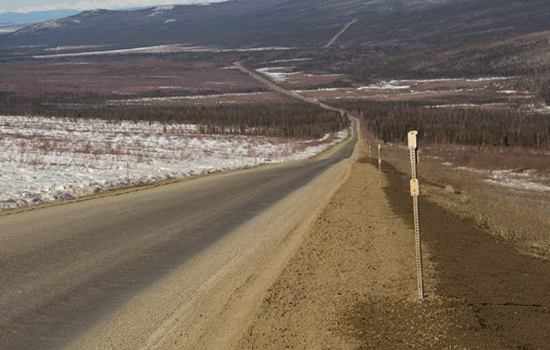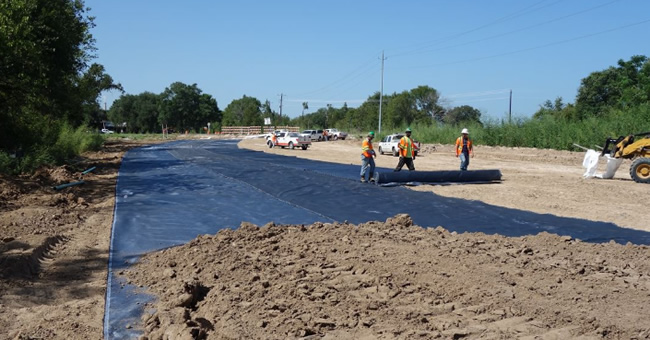Roughly eight years ago, TenCate Geosynthetics was involved in a now well-studied project along Alaska’s Dalton Highway. The road served as the only ground transportation route between the oil fields at Prudhoe Bay and the city of Fairbanks, but the extreme northern environment caused significant degradation along the 500-mile highway due to frost heave. Wicking geotextiles were proposed to strengthen the road system along a key stretch, pull water from the soil, and prevent the common freeze-thaw response.
The results were exceptional, both visually and in the data harvested from a network of sensors embedded in the design to monitor the road section.

While the potential and detrimental impact of water on roadway systems and embankments is well known, and while geosynthetics have commonly been used to mitigate a number of related geotechnical challenges, the integration of water removal through wicking geotextiles had not been tried prior to the Dalton Highway project.
RELATED: 6-Year Update: Frost Heave Mitigation for Alaskan Highway
TenCate’s woven solution with a wicking component removes water from a geotechnical design in saturated and unsaturated conditions; and, it continues to grow in acceptance among US departments of transportation. North Carolina is the latest to add the Mirafi® H2Ri product to its Approved Products List (Geotextiles – Type 5).
WICKING GEOTEXTILES NOT JUST FOR FROST HEAVE
“We are excited that the NCDOT made this decision,” TenCate’s team notes in announcing the agency’s decision, “and we believe this will help them greatly improve the stability and longevity of their roads in North Carolina.”
While the exemplary project in Alaska put the H2Ri line on the transportation field’s radar, the need for these geosynthetic innovations is much wider than the geotechnical challenge–frost heave and frost boils–that spurred the development.

RELATED: H2Ri Introduction Video
In North Carolina, the unique geology and expansive soils in the Triassic basins, especially near Raleigh, cause soil shrink and swell and differential movement. The use of wicking geotextiles is ideal in this scenario.
TenCate has engineered the material for use in railway, roadway, and airfield soil reinforcement applications. The product fortifies a soil, provides drainage and filtration, and contributes its unique wicking capability to provide long-term support against moisture in expansive soils.
Learn more about TenCate Geosynthetics’s materials, engineering services, and international project work at https://www.tencategeo.us.











